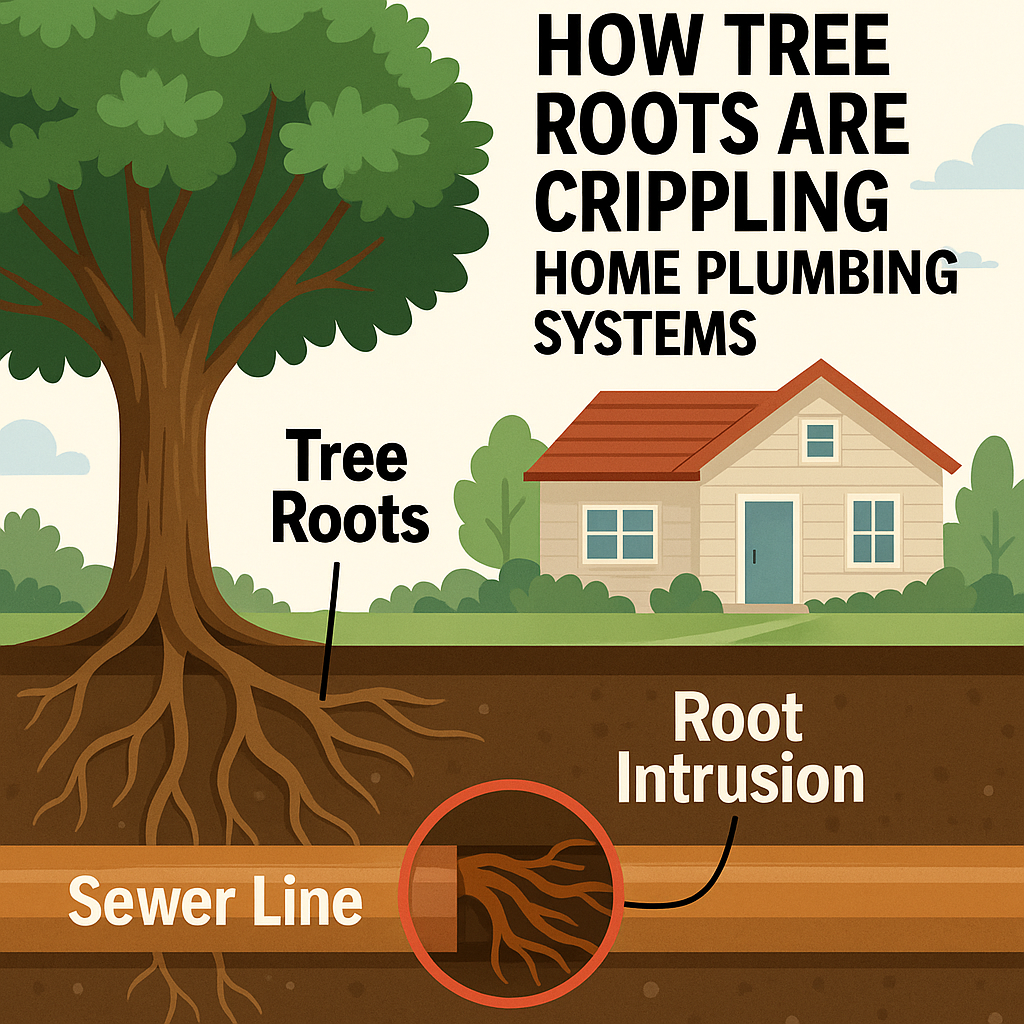- Serving Our NJ Neighbors 24/7 (888) 333-2422
The Hidden Threat Beneath Your Yard: How Tree Roots Invade Sewer Lines

When homeowners think of sewer line problems, they often imagine clogs from grease, hair, or debris. But one of the most common — and destructive — threats lurks underground: tree roots. As beautiful and essential as trees are to our landscape, their roots naturally seek out moisture and nutrients. Unfortunately, that leads them directly to underground sewer pipes, especially older clay or cast-iron lines with loose joints or tiny cracks. Over time, even small root intrusions can expand, creating blockages that slow drains, back up toilets, or even cause pipes to collapse.
This process is gradual but relentless. Trees can send out roots dozens of feet from their trunks. If there’s a crack or weak spot in a sewer line — which is common in homes built over 25 years ago — roots find their way in, growing thicker and stronger with time. Once inside, these roots trap waste and debris, compounding the issue until it becomes a full-blown sewer backup or rupture. The most common offenders? Fast-growing species like willows, maples, oaks, and poplars.
To make matters worse, many homeowners are unaware that their plumbing issues stem from tree root intrusion until it’s too late. Sewer line repairs can range from a few hundred to several thousand dollars depending on the extent of the damage, and most insurance policies don’t cover this type of problem. That’s why early detection and preventive action are critical.
Warning Signs of Root Intrusion in Your Sewer Line
You don’t need to wait for a major backup or messy situation to realize something’s wrong. There are early warning signs that your home may be suffering from tree root invasion in the sewer line. If you notice any of the following issues, it’s time to call a professional for a sewer camera inspection:
-
Slow draining sinks, tubs, or showers
-
Toilet frequently clogging or gurgling
-
Unpleasant odors coming from drains or yard
-
Soggy patches of grass or sudden sinkholes in the yard
-
Unexplained increase in water bills or lower water pressure
These symptoms are often mistaken for everyday plumbing problems, which is why many homeowners put off repairs — only for the issue to worsen over time. A sewer camera inspection can quickly reveal whether roots have entered the line and how severe the intrusion is. With this technology, plumbers can pinpoint the exact location of the blockage without tearing up your yard.
In some cases, hydro-jetting or mechanical root cutting can clear the pipe. However, if the root damage is extensive or has already led to pipe collapse, partial or full sewer line replacement may be required. Trenchless solutions like pipe bursting or relining are becoming more popular due to their lower impact on landscaping and shorter repair times.
Prevention and Long-Term Solutions: How to Protect Your Plumbing
The best way to protect your sewer line from tree roots is proactive prevention. First, identify the location of your sewer lines — most local utility services can mark underground utilities for you. Avoid planting trees or large shrubs within 10–20 feet of those lines, especially species known for aggressive root systems.
If you already have mature trees near your sewer line, regular maintenance is key. Schedule annual or bi-annual sewer line inspections to catch root growth early before it causes significant damage. Some homeowners even opt for root barriers — underground panels or treatments that redirect roots away from sensitive areas.
For those dealing with recurring root problems, a plumber may recommend chemical root treatments using safe, non-toxic foaming agents that kill roots inside pipes without harming the tree or surrounding soil. This method doesn’t fix the structural damage but can slow regrowth while you plan a long-term solution.
Lastly, consider upgrading old plumbing systems. If your home still has clay or cast iron pipes, replacing them with PVC or HDPE piping can significantly reduce future risks. These modern materials are more resistant to root intrusion and typically come with longer warranties.
Investing in proactive care can save thousands of dollars in future repair costs, protect your property from water damage, and ensure your home’s plumbing runs efficiently year-round. When in doubt, don’t wait — consult a licensed plumber who specializes in sewer and drain systems to evaluate your risk and recommend the best path forward.





